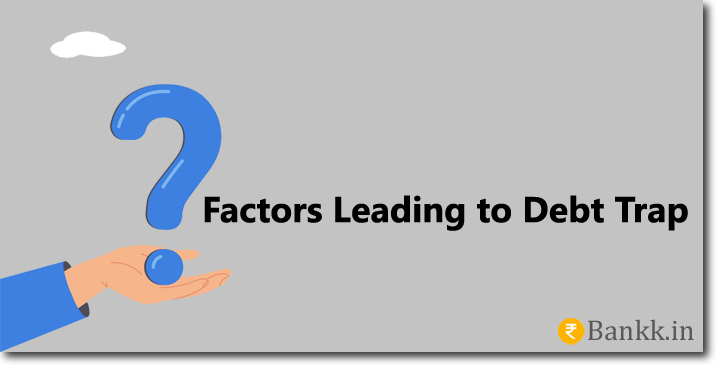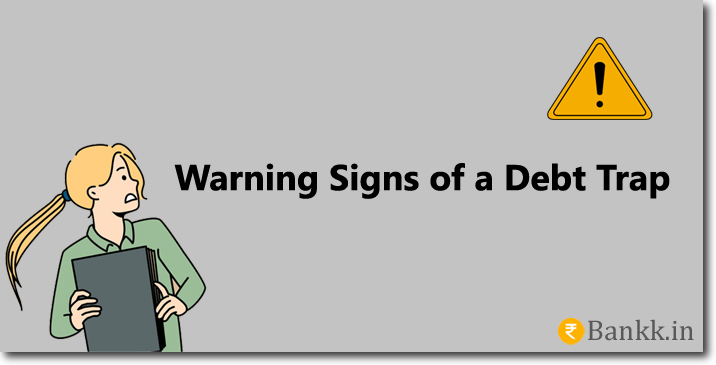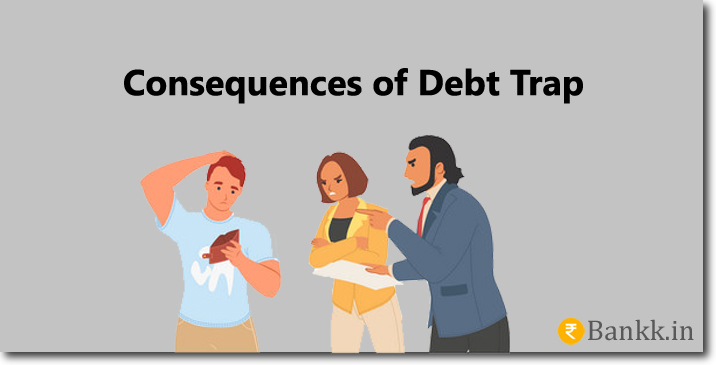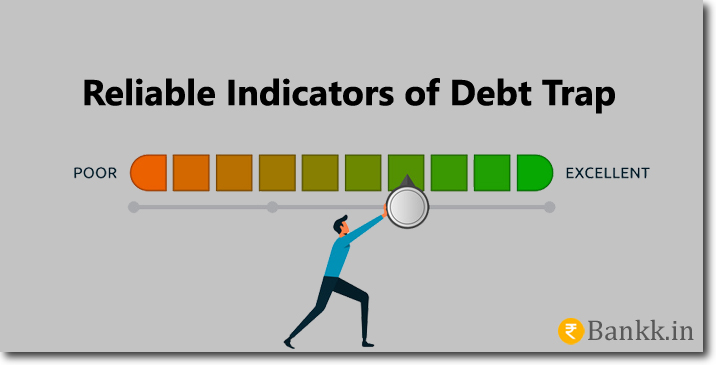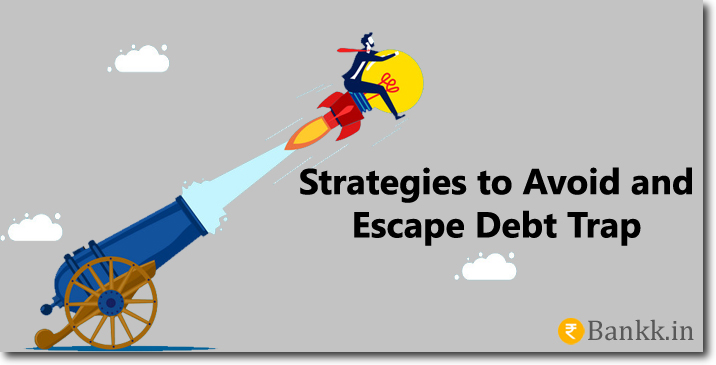A debt trap is a situation where an individual or an entity takes on multiple loans beyond their capacity to repay, leading to a vicious cycle of borrowing to repay previous loans. This often results in increased borrowings, high-interest rates, and unmanageable monthly payments.
In this article, we will explore some of the most important things that you should know about the debt trap. And also some of the strategies to avoid it.
Factors Leading to a Debt Trap
There are several factors that can lead to a debt trap. Here are some of the common reasons that can push individuals into a debt trap in India.
- Medical emergencies: Unexpected expenses due to medical emergencies can result in borrowing to cover costs. Without savings or insurance, expenses can quickly lead to a debt trap.
- Overspending: Easy credit access and consumerism can fuel overspending and mounting debt. Living beyond one’s means and failing to budget can result in unsustainable borrowing. Use a spending plan to avoid this.
- Job loss or reduced income: Losing a job or reduced income can make existing debt payments difficult. Without savings or a debt management plan, this can lead to a debt trap.
- Lack of financial literacy: Lack of understanding of basic financial concepts can result in poor financial decisions and debt mismanagement. Without knowledge and skills, individuals may fall into a debt trap.
- Poor credit management: Poor credit management, such as taking on too much credit or late payments, can increase debt. This can quickly lead to a debt trap.
- Economic downturn: An economic downturn can result in job loss, reduced income, and difficulty managing existing debt payments. Without savings or a debt management plan, this can lead to a debt trap.
These are some of the factors that can contribute to falling into a debt trap.
Recognizing the Warning Signs
It is important to recognize the warning signs of being in a debt trap. Ignoring them can worsen the situation over time. Here are some common signs that indicate someone is caught in a trap.
- Continuous borrowing: A red flag for a debt trap. This includes taking new loans, using credit cards, or borrowing from friends and family.
- Paying only minimum dues: Indicates financial distress. Results in increased interest charges over time.
- Relying on credit for daily expenses: A sign of a debt trap. Indicates an inability to cover basic needs with income.
- Ignoring bills or collection notices: This can result in increased fees, interest charges, and damage to credit scores. Indicates inability to manage payments.
These are some of the warning signs that can indicate someone is caught in a debt trap.
Consequences of Staying in a Debt Trap
Staying in a debt trap can have several negative consequences for an individual’s financial health and well-being. Here are some of the potential outcomes of remaining trapped in debt.
-
Bad credit score: Failing to make debt payments on time or defaulting on loans can result in a bad credit score. This can make it difficult to access credit in the future or result in higher interest rates on new loans.
-
Mental stress: The constant stress of managing debt and trying to make ends meet can take a toll on an individual’s mental health. This can result in increased anxiety, difficulty sleeping, and strained relationships with family and friends.
-
Strained relationships: Being caught in a debt trap can strain relationships with family and friends, as the individual may need to borrow money or rely on others for financial support. This can create tension and conflict within personal relationships.
-
Limited financial opportunities: Remaining trapped in debt can limit an individual’s financial opportunities, as they may be unable to save or invest for the future. This can result in reduced financial security and limited ability to achieve long-term financial goals.
These are some of the potential consequences of staying in a debt trap.
Reliable Indicators of Being in a Debt Trap
There are several reliable indicators that can help you determine if you are caught in a debt trap. Two of these indicators are the EMI-Salary Ratio and the Loan-Asset Ratio.
EMI-Salary Ratio
The EMI-Salary Ratio is the ratio of your monthly loan repayments (EMI) to your monthly salary. A high EMI-Salary Ratio indicates that a large portion of your income is going towards debt repayment, leaving little room for other expenses. Financial experts generally recommend keeping your EMI-Salary Ratio below 40% to avoid falling into a debt trap.
For example, if your monthly salary is ₹50,000. And if your monthly loan repayments (EMI) are ₹25,000, your EMI-Salary Ratio would be 50% (25,000/50,000). This is above the recommended level of 40%, indicating that you may be at risk of falling into a debt trap.
Loan-Asset Ratio
The Loan-Asset Ratio is the ratio of your total outstanding loans to your total assets. A high Loan-Asset Ratio indicates that you have a large amount of debt relative to your assets. This can make it difficult to repay your loans and increase the risk of falling into a debt trap. Financial experts generally recommend keeping your Loan-Asset Ratio below 50% to maintain financial stability.
For example, if your total outstanding loans are ₹500,000. And if your total assets are ₹1,000,000, your Loan-Asset Ratio would be 50% (500,000/1,000,000). This is at the upper limit of the recommended level of 50%, indicating that you may be at risk of falling into a debt trap.
By monitoring these two ratios and keeping them within recommended levels, you can reduce your risk of falling into a trap and maintain financial stability.
Strategies to Avoid and Escape the Debt Trap
1. Build Financial Literacy
Avoiding and escaping a debt trap requires building financial literacy. Understanding basic financial concepts is important. These include budgeting, saving money, and investing. In India, several resources are available. These include workshops, online platforms, and government initiatives.
2. Create a Realistic Budget
Creating a personalized budget is crucial. It should align with your income and financial goals. Start by categorizing your expenses and prioritizing debt payments. Have an emergency fund to pay for your unexpected expenses. Avoid relying on credit. Stick to your budget and make adjustments as needed.
3. Prioritize High-Interest Debts
Prioritizing high-interest debts is effective for reducing overall debt. It also helps avoid a debt trap. Consider using methods such as the debt avalanche or debt snowball. Focus on paying down high-interest debts first. By reducing interest paid over time, you can free up more money.
4. Explore Debt Consolidation
Debt consolidation can be effective for individuals with multiple high-interest debts. It simplifies payments and potentially reduces the overall interest rate. In India, options such as personal loans or balance transfer credit cards may be available.
5. Negotiate with Creditors
Negotiating with creditors and banks can result in lower interest rates or extended payment terms. It can also result in more manageable repayment plans. Don’t be afraid to reach out to your creditors and banks to discuss your situation.
6. Increase your Income
Increasing your income can provide additional funds for paying off debts and achieving financial stability. There are a lot of ways by which you can increase your income. These include asking for a raise at work, taking on a side job, or doing freelance work.
7. Keep Track of your Credit Score
Your credit score is a measure that helps creditors and banks to understand how creditworthy you are. It impacts your ability to access credit at favorable interest rates. You should regularly check your credit report and keep track of your credit score. Ensure that all information is accurate and take steps to improve your score if necessary.
8. Seek Professional Help
If you are struggling to manage your debt on your own, and don’t have a plan for how you can deal with it. Then consider seeking help from a professional. This could be a financial advisor, credit counseling agency, or debt management program.
Conclusion
Understanding the concept of the debt trap is important. Recognize its warning signs and implement strategies to avoid it. Take proactive steps toward managing your finances and making informed decisions about your borrowing and spending.

